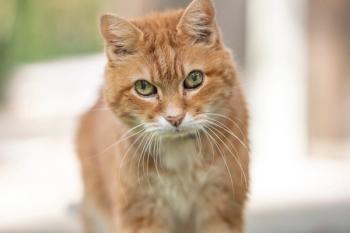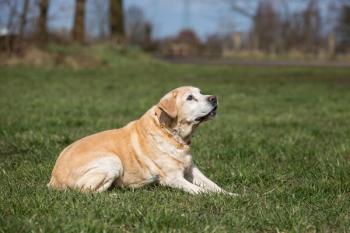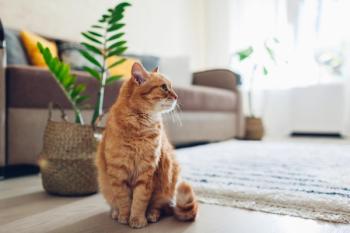
Tranquilizer/sedative/anesthetic options for temporary restraint of canine patients (Proceedings)
Pharmaceuticals do not take the place of clinical finesse.
Obvious (but important) Principles
• Appropriate physical exam and other evaluation as indicated
• Customize protocol for each patient's unique situation
• Pharmaceuticals do not take the place of clinical finesse
• Monitor for physiological effects and respond as needed
• Determine adequacy of recovery / fitness for return to ward/owners
• Counsel owners that recovering outpatient animals should be allowed to recover quietly and can not be trusted to respond typically for ± 24 hrs.
• Consult me or another anesthesiologist at any time for specific suggestions.
• Nobody likes an adventurous anesthetist!
• There are many other useful options and an infinite variety of clinical situations may occur.
A Few of Our Favorite Methods
1) Acepromazine - reliable tranquilization, not recommended for vicious or potentially dangerous animals, side effects are primarily hypotension but rarely some seizure-prone patients may develop seizures, contraindicated in shock or other hypovolemic conditions and in patients with liver disease, duration of effect 2 - 4 hrs, which is too long for most purposes.
• Ace at 0.05 to 0.2 mg/kg (0.05 to 0.1 mg/lb), max.3 mg total dose, SC, IM, IV
2) Acepromazine & Torbugesic (or other opioid) - substantial and reliable effect; not as often recommended for older/compromised patients; fairly prolonged effect, particularly if hepatic function is impaired; may not be the best choice for out-patients since return to "street fitness" often requires 4-6 hrs.
• Ace at 0.01 to 0.05 mg/kg, max.1.0 mg, SC, IM, or IV
• Torbugesic at 0.2 to 0.4 mg/kg, SC, IM, or IV
• Optional anticholinergics, to avoid or treat bradycardia:
• Glycopyrrolate at 0.005 to 0.015 mg/kg, SC, or IM
• Atropine at 0.02 to 0.05 mg/kg, SC, or IM
3) Valium (diazepam) & Torbugesic - less "heavy handed" than Ace & Torbugesic, but also a less substantial and less reliable effect; one of our favorite pre-anesthetic choices for the debilitated generic or geriatric/high risk patient; expect peak effects to last for about 30 min with return to "street- fitness" within 1-2 hrs. Midazolam (Versed) is currently taking the place of diazepam. One-half the listed dose of Valium or Versed is often adequate. Excitement and disorientation may occur and patient should not be stimulated nor trusted to remain sedate.
• Torbugesic at 0.2 to 0.4 mg/kg SC, IM, or IV. Followed by:
• Valium at 0.25 to 0.4 mg/kg IV (IV route strongly preferred)
• or Versed at 0.1 to 0.5 mg/kg SC, IM, or IV
• Optional anticholinergic:
• Glycopyrrolate at 0.005 to 0.015 mg/kg, SC, or IM
• Atropine at 0.02 to 0.05 mg/kg, SC, or IM
4) Telazol - remarkable physiologic stability, but beware of respiratory depression and potential to initiate seizures; avoid in patients with respiratory compromise and in those with hypertrophic cardiomyopathy or seizure history or certain intracranial or intraocular disorders (increases IOP and ICP). Expect fairly full recovery within 2 hours, but some residual effects are unfortunately too common.
• Telazol at 1-3 mg/lb (2-6 mg/kg) SC or IM
• Begin with lower doses for restraint
• Torbugesic at 0.1-0.2 mg/lb (0.2-0.4 mg/kg) mixed with Telazol
• May be given carefully by IV route - increases side-effects
• Optional anticholinergic to reduce salivation:
• Glycopyrrolate at 0.005 mg/lb (0.01 mg/kg) SC or IM
5) Dex-Medetomidine (Dexdomitor) – powerful sedative/hypnotic, similar to medetomidine (Domitor). Recommended for young, healthy, exercise-tolerant dogs. Patient monitoring is important. Availability of specific antagonist (Antisedan) contributes to safety and utility. Useful for examinations and brief procedures. Profound bradycardia and hypertension may occur. Tissue perfusion is decreased. Pulse oximeters may fail to detect signal. Use of atropine or other anticholinergics is controversial. We avoid the anticholinergics. Standard dose is scaled to body surface area (see box label).
6) We use a low dose Dexdomitor method (typically 0.0005 to 0.0025 mg/kg), combined with Torbugesic (0.2-0.4 mg/kg). These low doses of Dexdomitor, when combined with an opioid, are very effective. Reversal with Antisedan (by IM injection only) leaves the mild Torbugesic effect intact. Reversal is less often needed with Dexdomitor than with Domitor. Differences in duration of effect and in sedation may be related to the presence of "levo-domitor" in the earlier (Domitor) formulation.
Newsletter
From exam room tips to practice management insights, get trusted veterinary news delivered straight to your inbox—subscribe to dvm360.




